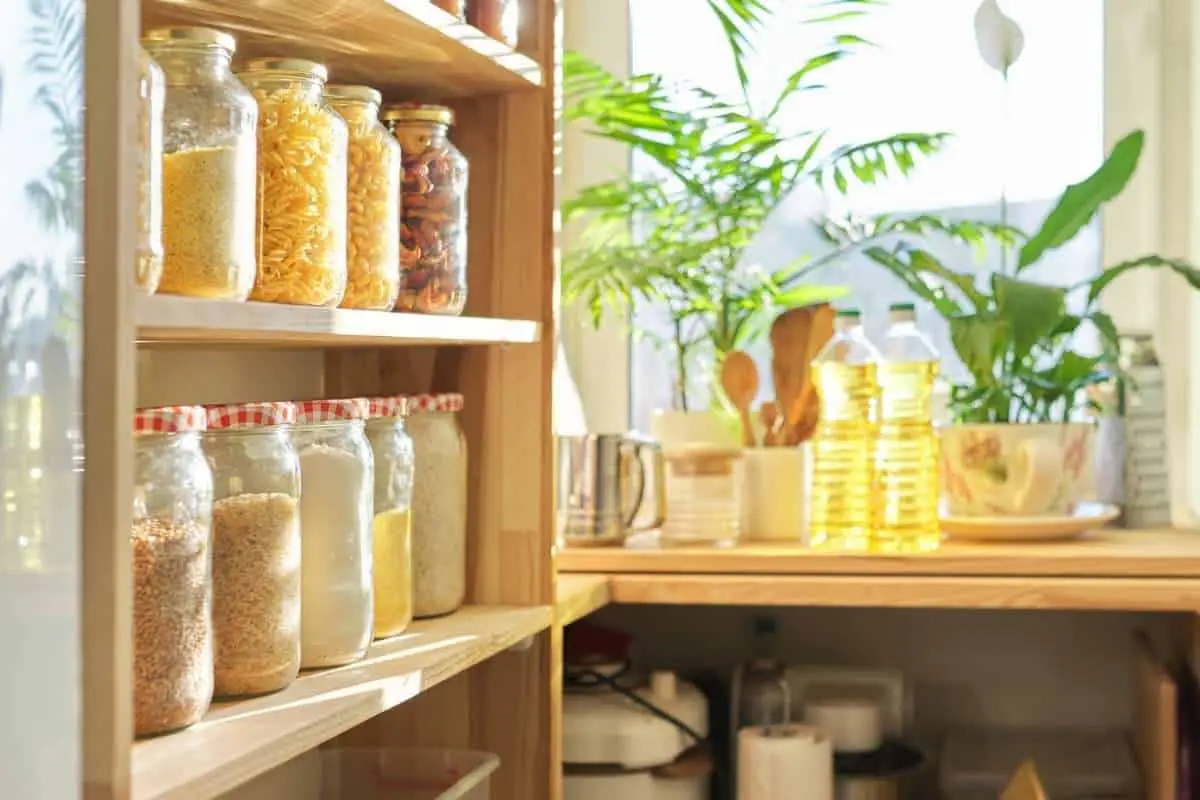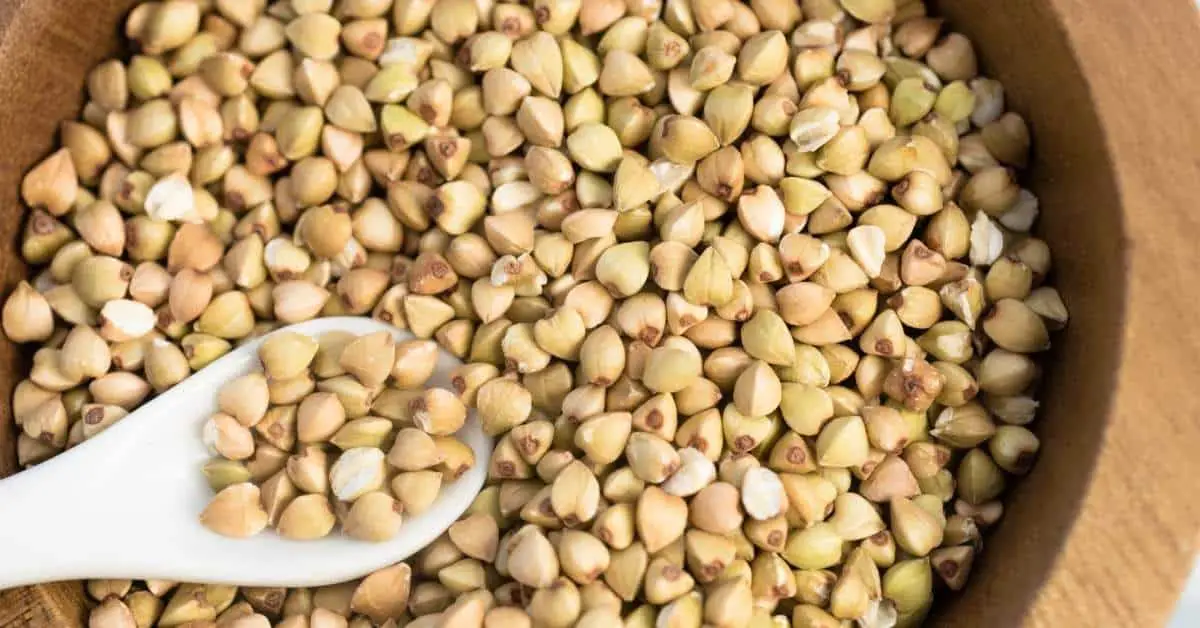Do you want to save money and feel more in control of your home? Then it’s time for you to start stocking your pantry.

There’s something romantic about a pantry, isn’t there? A basket of onions, a trio of homemade jams, and boxes of pasta lined up perfectly.
But for some reason, the reality of your kitchen pantry is quite different. There’s an enormous box that’s holding snacks no one likes, a few bags of flaxseed from that healthy eating kick you were on, and oh yeah… the vacuum.
The truth is, your pantry can be more than just a neglected corner full of stuff you wish you hadn’t bought. Here’s how to stock a pantry that’s designed for your family and filled with ingredients you’ll really use.
A well-stocked pantry is a great way to ensure that you always have the ingredients on hand for delicious meals. It also makes grocery shopping easier because instead of running out to the store every time you need an ingredient, all you have to do is open up your cupboards! Finally, it helps your grocery budget because you can stock up on pantry essentials when prices are low, not because you’ve suddenly run out of something.
Let’s go over what you need–and what you don’t–in your home pantry. If you do this right, it will save you money every day. But if you fill it up with nonsense, it will be an expensive waste of time.
Why it’s worth it to build a pantry stockpile
While it is lovely to open up your cupboard doors and look at a full stock of food, it can be a challenge to actually get to that point. Knowing the tips and tricks to make the most of your local grocery store trips can help you get your pantry staples on a budget.
If there is one thing that history has taught us repeatedly, it is the simple fact that it is essential to have food on hand for tough times.
I am not saying you need to be a Doomsday Prepper, but having a full pantry is a straightforward way to guarantee food security. A simple thing like a supply chain disruption or heavy rain can cause problems at grocery stores.
The most important rule: only buy what you’ll eat!
It doesn’t matter how cheap it is; it will not save you money if you don’t eat it.
You want to fill your pantry with things you would actually eat, so you need to be brutally honest with yourself about what you like and don’t like.
If it helps, make a list. Not some weird random list of stuff you think you should buy, but a list of items you use in recipes day in and day out.
Rule #2: always have at least one unopened backup of your most-used pantry staples
There is no worse feeling than running out of something in the middle of making a recipe.
You know you need it, but when you open up the pantry doors…empty! Now you have to either give up on your dinner and order takeout or run to the store.
Both options hurt your budget and are annoying.
By always having at least one backup on hand, all it takes is a quick trip to the pantry, and your recipe can continue without interruption.
So before you go buying a 24-pack of peanut butter, remember the “one backup’ rule. When you OPEN the last of something, you need to buy at least one of those items the next time you go to the grocery store.
Consider yourself well and truly out of something when you open the last one on the shelf. At that point, it goes on your grocery list and must be purchased, whether it’s on sale or not.
If it’s not on sale, just use store brands to buy one or two. You do not want to be caught without something when you need it.
Now, let’s take a look at saving money while we build up our pantry.
Stock up when pantry items are on sale
Everything in your local grocery store has a selling cycle, which means there is a high price and a rock bottom price over time. The trick is to purchase those items you want at that low price, and if you can add a coupon to it, even better!
It can be tricky to figure out your specific store’s cycle. If you save the weekly sales ads for about two months, though, you will clearly see their pattern.
Certain staples like pasta and cereal go on sale every six to eight weeks. If you watch for that lowest price before adding that item to your list, you will be rocking the deals. Keep a record of the lowest prices, so you know when it’s time to stock up.
It is amazing how buying ten boxes of pasta for a buck saves you almost ten dollars if you eat a pasta meal every week, and it usually is two dollars a box.
Now think of every other pantry staple, from canned vegetables to macaroni and cheese. You can just see how simply working your store’s selling cycle can pay off your budget in a big way.
Buying low should be your go-to trick from pasta, grains, ready-to-eat cereal, crackers, cookies, and more.
Buy seasonal sales
There are regular sales and seasonal sales. A savvy shopper takes advantage of both.
For example, condiments are on sale almost all summer, and baking supplies go on sale during the holidays.
February is national canned food month and offers a ton of incredible sales specials in addition to extra coupons out there. If you want to bulk up your pantry on the cheap, February is the perfect time for canned meat, beans, vegetables, vegetable juices, fruit, fruit juices, even canned milk.
If there are certain items you want to stock up on right away, just look for store brands. You can get your pantry stocked just fine without name brands.
Stop buying expensive snack foods
When you consider the cost per ounce of prepared convenience food, it becomes clear how much it costs. Let’s use tortilla chips as an example. You may buy an entire bag for $2.50 off or three to four packs for $0.75 each when you get the single-serving packets.
I am not saying you have to get the jumbo cans of baked beans, but all of those pudding cups, fruit cups, and four-count cookie packs charge you for that work of breaking them down.
Take a few minutes to portion them out yourself, and you can even get convenience foods at a great price.
Now, of course, the best way to help your grocery budget and have a stocked pantry is to skip snack foods altogether.
Learn to can
If you get free produce or garden, canning your vegetables will only take your time. You can save money on the cost of supplies that you need when getting started by looking at your local thrift stores or Facebook groups. Have no fear if you are new to the concept: you can learn anything on YouTube these days.
It isn’t that hard to fill a pantry on a budget, and more importantly maintain it, once you have the tips and tricks down so you can do it.
The pantry staples you need

Dried goods
Pasta, rice, dried beans, lentils, and oats are a great place to start when you need cheap pantry items. They are filling, have a long shelf life, and you only need to add a few seasonings and veggies to have a complete meal.
To keep things simple, make bulk purchases of these instead of hunting for sales. They are very affordable just the way they are.
Canned foods
Don’t forget these pantry basics:
- canned tomatoes
- canned beans (such as black beans or pinto beans)
- pasta sauce
Produce
You’ll always want to have fresh garlic and onions on hand, as well as a few frozen vegetables and fruits.
Condiments and seasonings
Don’t forget about ketchup, mustard, barbecue sauce, mayo, jam, and peanut butter basics.
Spices are hard to stock up on because they don’t keep very well.
The only ones really worth buying in bulk are salt and pepper
Baking
You’ll need
- all purpose flour
- bread flour or other specialty flours you bake with
- baking soda and baking powder
- chocolate chips
- powdered milk
Keep in mind that whole grains have a shorter shelf life than white flour, so if you prefer to bake with those, don’t over-buy
Oils and vinegar
Have at least one extra of the following:
olive oil
vegetable oil
apple cider vinegar, white vinegar, and red wine vinegar
nonstick cooking spray
Non-food items
While not strictly pantry staples, stocking up on toiletries, toilet paper is helping to have on hand and is easy to stock up on.
Your pantry plan
Feel like all this sounds great, but your grocery bill is already high, and you just can’t afford to buy extras of everything? I get it.
The answer to building a pantry on a budget is to do it bit by bit over time. Set aside $5 per week and buy extras of just one thing. You can stock up on what’s on sale or start with the ingredients in your favorite meals.
Just get started, however small it feels at first. Over time, you’ll be amazed by how far you’ve come. (This is a good philosophy for just about everything.)
